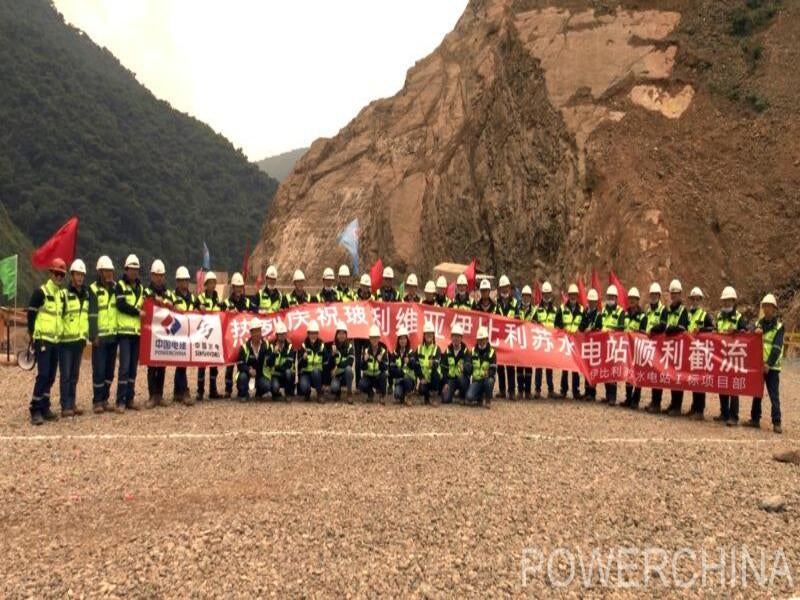The Ivirizu hydroelectric power project is a 292MW run-of-the-river hydropower facility under construction in the Carrasco province of Bolivia. It involves two cascade hydropower plants, namely Sehuencas and Juntas, in the Alta Cuenca of the Ivirizu River.
Ende Valle Hermoso (EVH), a subsidiary of the Bolivian state power corporation Empresa Nacional de Electricidad (Ende), is developing the project with an estimated investment of £417m ($550m).
The construction of the diversion channel for the project was completed in October 2020 with the start of commercial operations of the facility expected by 2022.
The Ivirizu hydropower facility is estimated to produce approximately 1160.89 GWh of electricity annually, at full capacity.
Location and site details
The Ivirizu hydroelectric power project is located in the municipality of Totora, in the Cochabamba Department of the Carrasco province, Bolivia.
The project site lies within the limits of Carrasco National Park, on the Ivirizu River, a tributary of the Chapare River, which is a tributary of the Mamoré River in the Bolivian Amazon Basin.
Ivirizu hydroelectric plants make-up
The Ivirizu hydroelectric power project will comprise Sehuencas and Juntas power plants of 200MW and 92MW capacities respectively.
The Sehuencas power plant, located at 1303.6m above sea level, will be equipped with three Pelton turbines, while the Juntas plant at an elevation 972.72m above the sea level will feature two Francis turbines.
The plants will feature three 80MVA and two 54MVA vertical generators delivering a nominal voltage of 11.5kV.
Dam and reservoir details
The Sehuencas plant will utilise a 105m-high compacted concrete dam creating a 40 cubic hectometres (hm3) reservoir, a 5.4km-long adduction tunnel, two 2.35m-diametre penstocks, and a 1.8m-diametre penstock. The water for the Sehuencas plant will be sourced from the Ivirizu River in the Sehuencas reservoir.
The Juntas hydropower plant will use the regulated water flow from the Sehuencas plant, as well as the water from the Obra de Toma de Juntas located on the Ivirizu River. It will involve a 1,697m-long adduction tunnel, a loading chamber, and two 2.2m-diametre penstocks.
Power transmission
The electricity generated by the Ivirizu hydropower project will be evacuated into Bolivia’s National Interconnected System (SIN) through a 230kV power transmission line.
The evacuation line will be connected through the Juntas-Sehuencas and Sehuencas-Mizque transmission lines.
Financing
The Central Bank of Bolivia (BCB) agreed to provide £427.23m ($539.70m) of loan for the project under a contract signed with Ende Corporation in September 2016.
Contractors involved
Spanish contractor TSK was engaged as the engineering, construction, and procurement (EPC) contractor for the project. The contract scope includes the civil construction works, as well as the supply, assembly, and commissioning of the hydro-electromechanical equipment.
Rainpower was subcontracted by TSK for the supply of three Pelton and two Francis turbines, while its subsidiary Hymatek Controls is responsible for the delivery of the oil pressure systems.
China’s state-owned hydropower project contractor Sinohydro Corporation signed a contract for the construction of the dam and adjoining road with Ende Valle Hermoso in September 2017. The Fourth Hydropower Bureau is responsible for the construction of the dam while the 11th Bureau of Hydropower was in charge of the diversion tunnel construction.
Indar was contracted to deliver a total of five vertical hydro generators, including three 80MVA generators and two 54MVA generators for the project in September 2019.
Ingetec Consulting Engineering has been engaged for the supervision services, while GH Cranes and Components provided cranes for the site construction works.
Ende Transmission is responsible for the construction of two substations for the Sehuencas and the Juntas plants along with the interconnection lines between them.
Orinoco Consultant was engaged to review, evaluate and validate the civil design and associated work measurements of the construction.
OCSA Geophysical Company was engaged to carry out the geophysical services using high-resolution seismic reflection technology in 2015.





